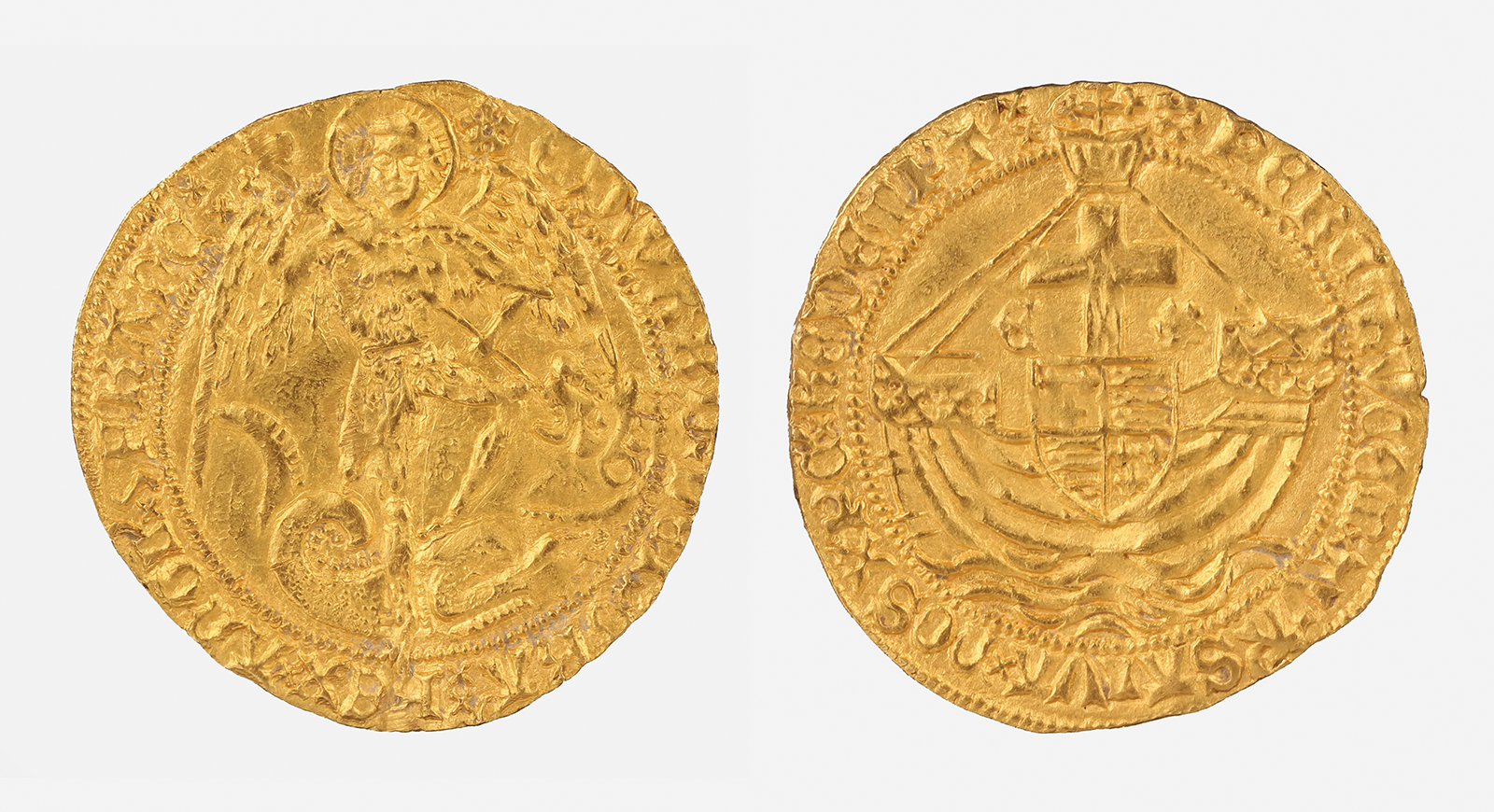
A gold-angel coin discovered at Itchingfield in West Sussex has just been sold at Toovey’s for £4200.
Toovey’s coin specialist, Mark Stonard, explains “Dating from between 1471 and 1483 the coin was an example of a gold-angel coin introduced during the reign of Edward IV in 1465. The obverse depicts the Archangel Michael defeating the devil who is represented as a dragon. The reverse is decorated with a ship showing the power of the English naval fleet and the importance of shipping to our overseas trade.”
I ask Mark about the coin’s discovery, he replies “The coin was found at Itchingfield in the Horsham District by a responsible detectorist. It was recorded by the Portable Antiquities Scheme and returned to the finder. The finder and the landowner decided to enter this remarkable coin into Toovey’s specialist coin sale where it made £4200. It’s so important to emphasise the value of recording finds made by metal detectorists. The location and context of where things are found gives us a fantastic record of what has been before us.”
Mark continues “These coins were often known as touch pieces and were thought to bring good fortune and healing. It was thought that coins given at Holy Communion could be rubbed on parts of the body suffering from rheumatism to bring a cure. This tradition was also employed using coins given by the King or Queen in a ceremony which illustrated the ‘Divine Right of Kings’ before God. People of royal blood were thought to have the God-given power of healing through touch which is why the coins became known as touch pieces. Coins which depicted the defeat of the Devil were favoured and emphasised the monarch’s divinely given healing power.”

“A Henry VIII first coinage gold-angel coin dating from between 1509 and 1526 was also entered at Toovey’s and realised £3000. These coins are often pierced so they could be worn by the recipient, it was exciting to see these two complete examples.”
Reflecting on the current high prices for coins Mark concludes “The specialist collector’s field of coins remains really strong. These objects help us to understand our history and powerfully connect us to it.”
Mark Stonard is inviting entries for his next specialist sale of coins on and can be contacted by telephoning 01903 891955.